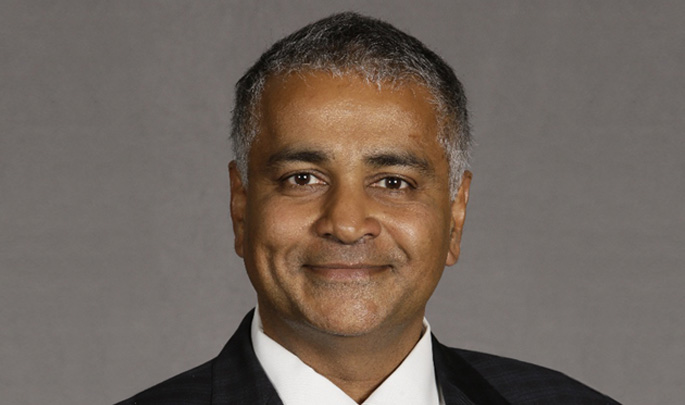References
1. Oberlin DT, Flum AS, Bachrach L, et al. Contemporary surgical trends in the management of upper tract calculi. J Urol. 2015 Mar;193(3):880-4.
2. Turney B, Demaire C, Klocker S, et al. Upper Urinary Tract Stones: Evolution of Surgical Management Trends in Germany, France and England over the Past Decade. Paper presented at: 38th World Congress of Endourology; September 23–25, 2021; Hamburg, Germany. Abstract MP04–06.
3. Aboumarzouk OM, Monga M, Kata SG, et al. Flexible ureteroscopy and laser lithotripsy for stones >2 cm: A systematic review and meta-analysis. J Endourol. 2012 Oct;26(1):1257–63.
4. Metzler IS, Holt S, Harper J. Surgical trends in nephrolithiasis: increasing de novo renal access by urologists for percutaneous nephrolithotomy. J Endourol. 2021 Jn;35(6):769–74.
5. Auge BK, Pietrow PK, Lallas CD, et al. Ureteral access sheath provides protection against elevated renal pressures during routine flexible ureteroscopic stone manipulation. J Endourol. 2004 Feb;18(1):33–6.
6. Rehman J, Monga M, Landman J, et al. Characterization of intrapelvic pressure during ureteropyeloscopy with ureteral access sheaths. Urology 2003 Apr;61(4):713–8.
7. Patel N, Monga M. Ureteral access sheaths: a comprehensive comparison of physical and mechanical properties. Int Braz J Urol. 2018 May-Jun;44(3):524–35.
8. Meier K, Hiller S, Dauw C, et al. Understanding ureteral access sheath use within a statewide collaborative and its effect on surgical and clinical outcomes. J Endourol. 2021 Sep;35(9):1340–7.
9. De Coninck V, Keller EX, Rodriguez-Monsalve M, et al. Systematic review of ureteral access sheaths: facts and myths. BJU Int. 2018 Dec;122(6):959–69.
10. Traxer O, et al. Differences in renal stone treatment and outcomes for patients treated either with or without the support of a ureteral access sheath: The Clinical Research Office of the Endourological Society Ureteroscopy Global Study. World J Urol. 2015 Dec;33(12):2137–44.
11. Osther PJS, Pedersen KV, Lildal SK, et al. Pathophysiological aspects of ureterorenoscopic management of upper urinary tract calculi. Curr Opin Urol. 2016 Jan;26(1):63–9.
12. Tokas T, Herrmann TRW, Skolarikos A, et al. Training and Research in Urological Surgery and Technology (T.R.U.S.T.) Group. Pressure matters: Intrarenal pressures during normal and pathological conditions, and impact of increased values to renal physiology. World J Urol. 2019 Jan;37(1):125–31.
13. Zhong W, Leto G, Wang L, et al. Systemic inflammatory response syndrome after flexible ureteroscopic lithotripsy: A study of risk factors. J Endourol. 2015 Jan;29(1):25–8.
14. Gutierrez-Aceves J, Negrete-Pulido O, Avila-Herrera P. Preoperative Antibiotics and Prevention of Sepsis in Genitourinary Surgery. In Smith AD, Badlani GH, Preminger GM, Kavoussi LR (Eds.), Smith’s Textbook of Endourology. New York, NY: Blackwell Publishing Ltd., 2012:38–52.
15. Wong VK, Aminoltejari K, Almutairi K, et al. Controversies associated with ureteral access sheath placement during ureteroscopy. Investig Clin Urol. 2020 Sep;61(5):455–63.
16. Ng YH, Somani BK, Dennison A, et al. Irrigant flow and intrarenal pressure during flexible ureteroscopy: The effect of different access sheaths, working channel instruments, and hydrostatic pressure. J Endourol. 2010 Dec;24(12):1915–20.
17. Humphreys MR, Shah OD, Monga M, et al. Dusting versus basketing during ureteroscopy- which technique is more efficacious? A prospective multicenter trial from the EDGE research consortium. J Urol. 2018 May;199(5):1272–6.
18. Aldoukhi AH, Hall TL, Ghani KR, et al. Caliceal fluid temperature during high-power holmium laser lithotripsy in an in vivo porcine model. J Endourol. 2018 Aug;32(8):724–9.
19. Elhilali MM, Badaan S, Ibrahim A, et al. Use of the Moses technology to improve holmium laser lithotripsy outcomes: a preclinical study. J Endourol. 2017 Jun;31(6):598–604.
20. Dauw CA, Simeon L, Alruwaily AF, et al. Contemporary practice patterns of flexible ureteroscopy for treating renal stones: results of a worldwide survey. J Endourol. 2015 Nov;29(11):1221–30.
21. Inoue T, Okada S, Hamamoto S, Fujisawa M. Retrograde intrarenal surgery: past, present, and future. Investig Clin Urol. 2021 Mar;62(2):121–35.
22. Macejko A, Okotie OT, Zhao LC, et al. Computed tomography-determined stone-free rates for ureteroscopy of upper-tract stones. J Endourol. 2009 Mar;23(3):379-82.
23. Rippel CA, Nikkel L, Lin YK, et al. Residual fragments following ureteroscopic lithotripsy: incidence and predictors on postoperative computerized tomography. J Urol. 2012 Dec;188(6):2246–51.
24. Pearle MS. Is ureteroscopy as good as we think? J Urol. 2016 Apr;195(4 Pt 1):823–4.
25. Skolarikos A, Gross AJ, Krebs A, et al. Outcomes of flexible ureterorenoscopy for solitary renal stones in the CROES URS global study. J Urol. 2015 Jul;194(1):137–43.
26. Somani BK, Giusti G, Sun Y, et al. Complications associated with ureterorenoscopy (URS) related to treatment of urolithiasis: the Clinical Research Office of Endourological Society URS Global study. World J Urol. 2017;35(4):675–681.
27. Cindolo L, Castellan P, Scoffone CM, et al. Mortality and flexible ureteroscopy: analysis of six cases. World J Urol. 2016 Mar;34(3):305–10.
28. Bhanot R, Pietropaolo A, Tokas T, et al. Predictors and strategies to avoid mortality following ureteroscopy for stone disease: A systematic review from European Association of Urologists Sections of Urolithiasis (EULIS) and Uro-technology (ESUT). Eur Urol Focus. 2022;8(2):598–607.
29. Zeng G, Zhao Z, Mazzon G. European Association of Urology Section of Urolithiasis and International Alliance of Urolithiasis Joint Consensus on Retrograde Intrarenal Surgery for the Management of Renal Stones. European Urology Focus. 2020 Oct.
30. Bhojani NB, Miller LE, Bhattacharyya S, et al. Risk factors for urosepsis after ureteroscopy for stone disease: a systematic review with meta-analysis. J Endourol. 2021 Jul;35(7):991–1000.
31. Geraghty RM, Pietropaolo A, Villa L, et al. Post-ureteroscopy infections are linked to pre-operative stent dwell time over two months: Outcomes of three European endourology centres. J Clin Med. 2022;11(2):310.
IMPORTANT INFORMATION: These materials are intended to describe common clinical considerations and procedural steps but may not be appropriate for every patient or case. Decisions surrounding patient care depend on the physician’s professional judgement in consideration of all available information for the individual case.
Boston Scientific (BSC) does not promote or encourage the use of its devices outside their approved labeling. Case studies are not necessarily representative of clinical outcomes in all cases as individual results may vary. Bench test or pre-clinical study results may not necessarily be indicative of clinical performance.
Oliver Wiseman, MD, is a Boston Scientific consultant and was compensated for his contribution to this article. This information presented does not constitute medical or legal advice, and Boston Scientific makes no representation regarding the medical benefits included in this information.
CAUTION: U.S. Federal law restricts this device to sale by or on the order of a physician.
CAUTION: The law restricts these devices to sale by or on the order of a physician. Indications, contraindications, warnings and instructions for use can be found in the product labelling supplied with each device. Products shown for INFORMATION purposes only and may not be approved or for sale in certain countries. This material not intended for use in France.
All images are the property of Boston Scientific. All trademarks are the property of their respective owners.

